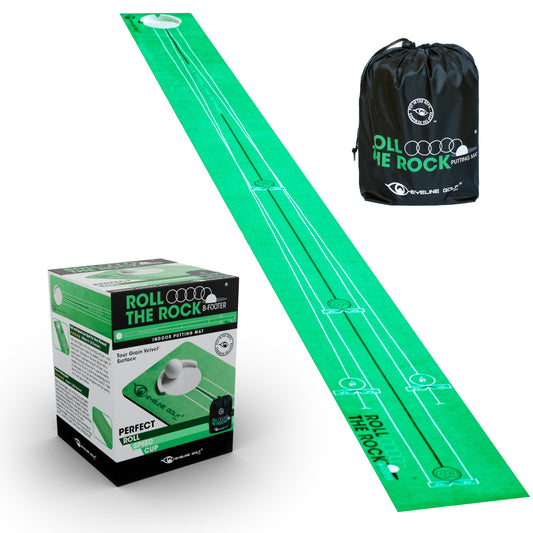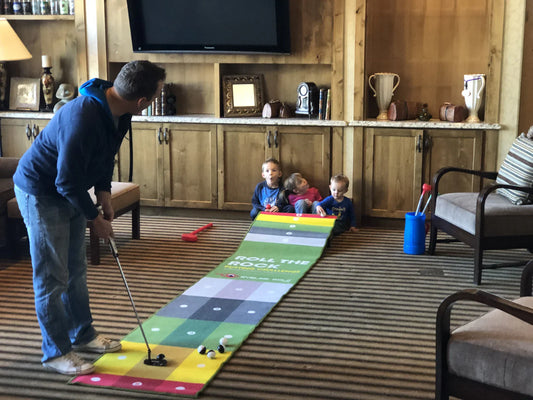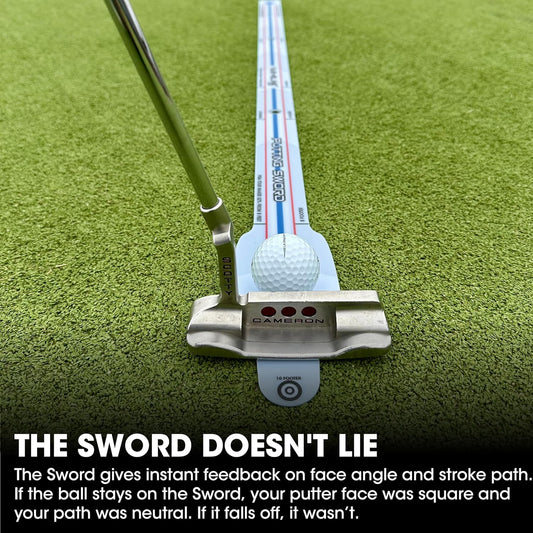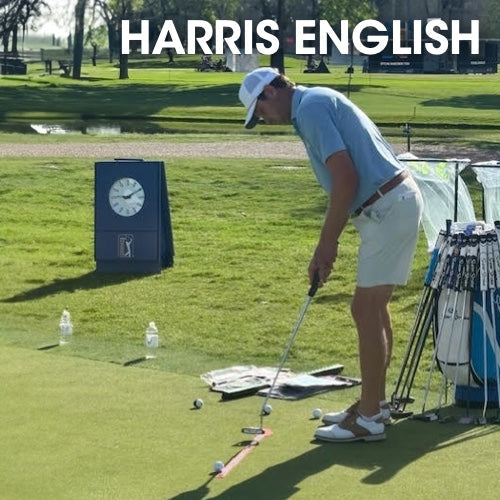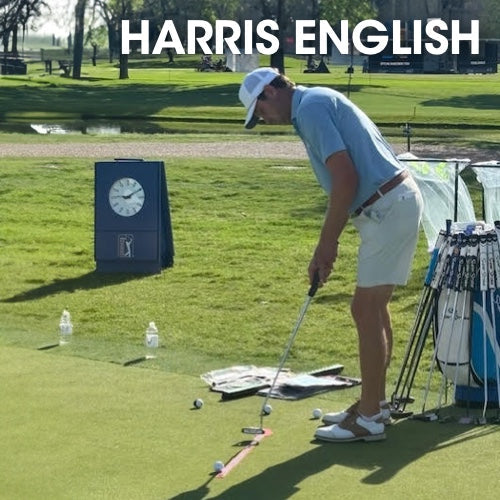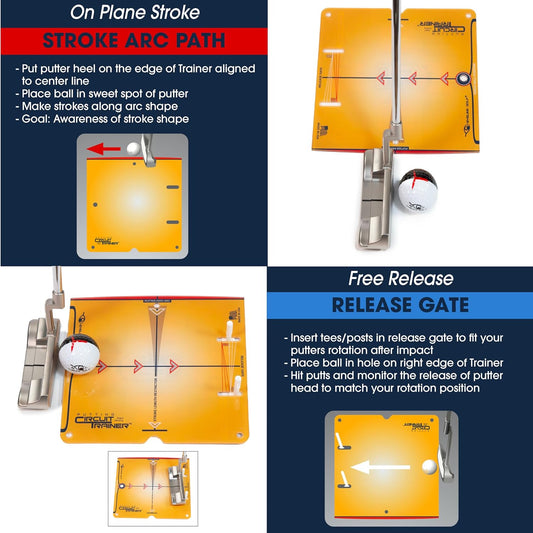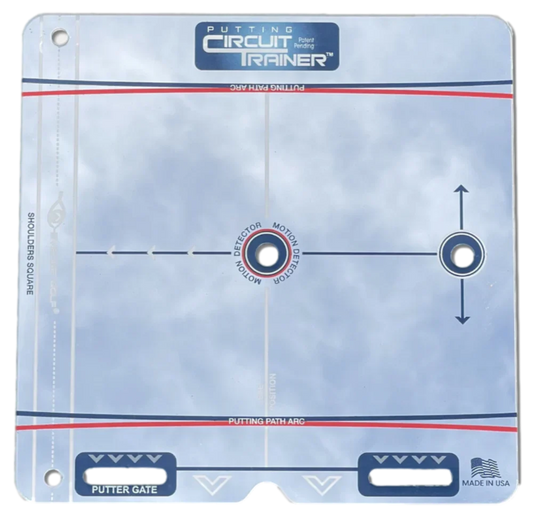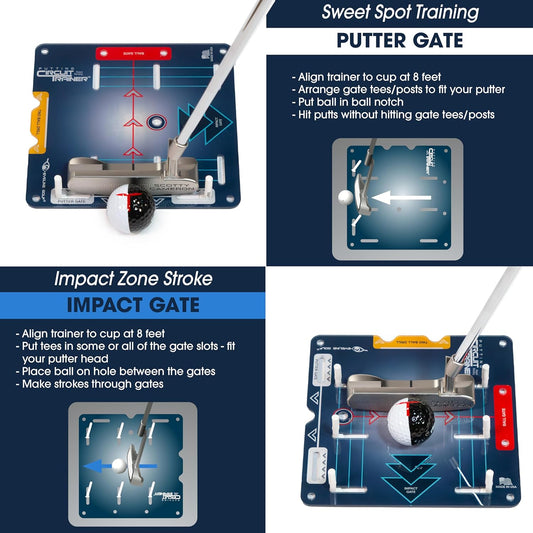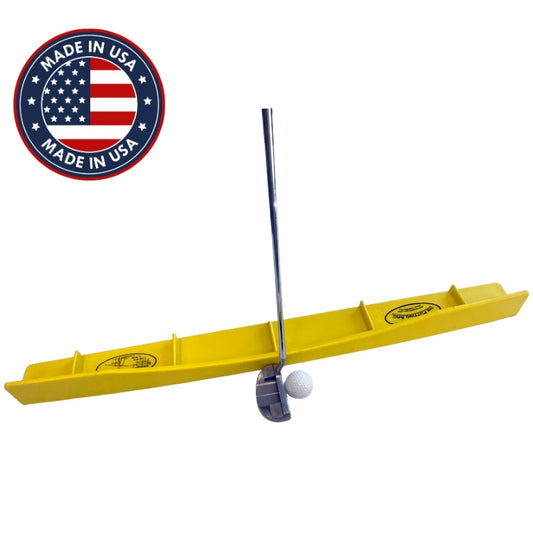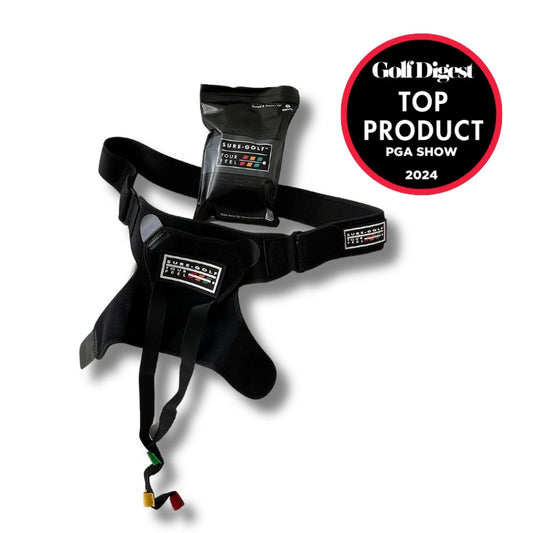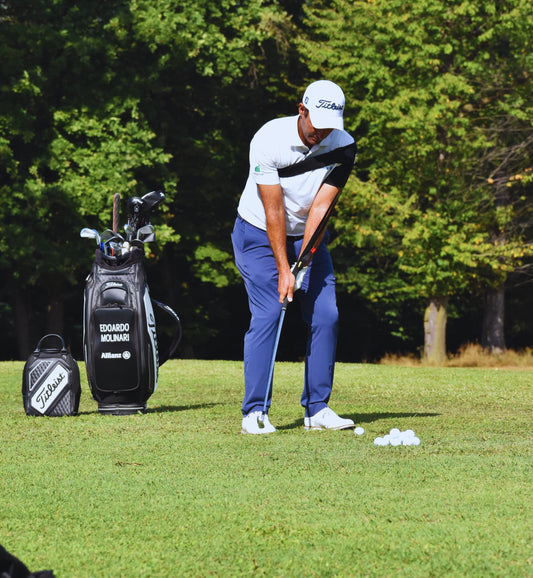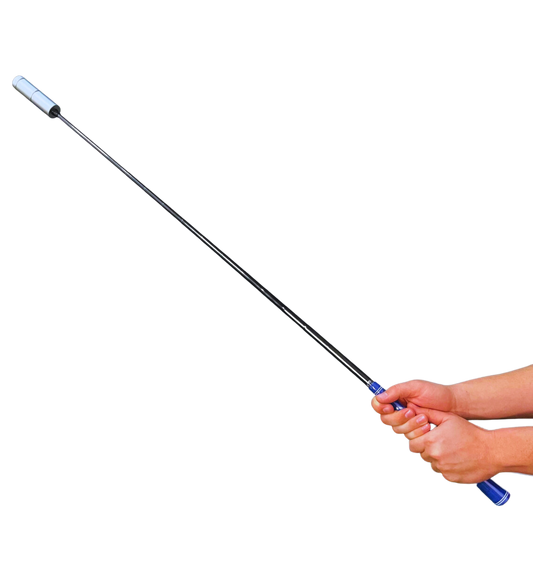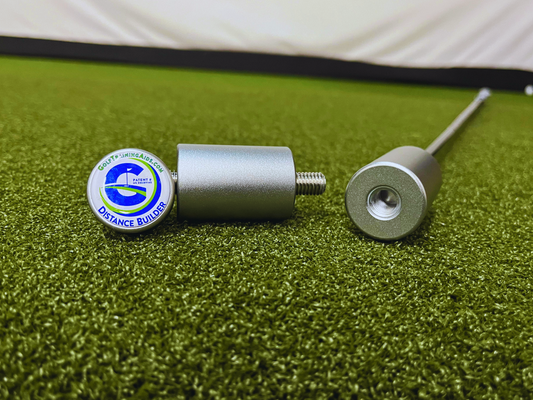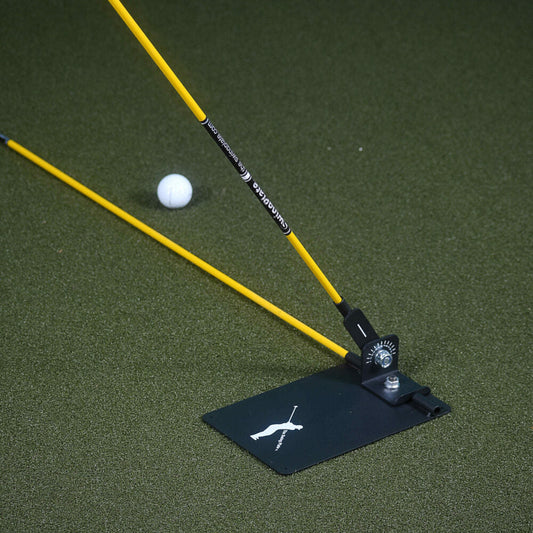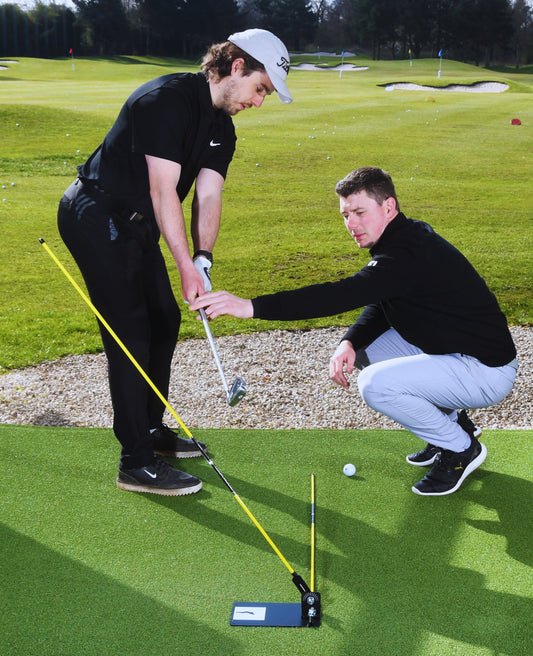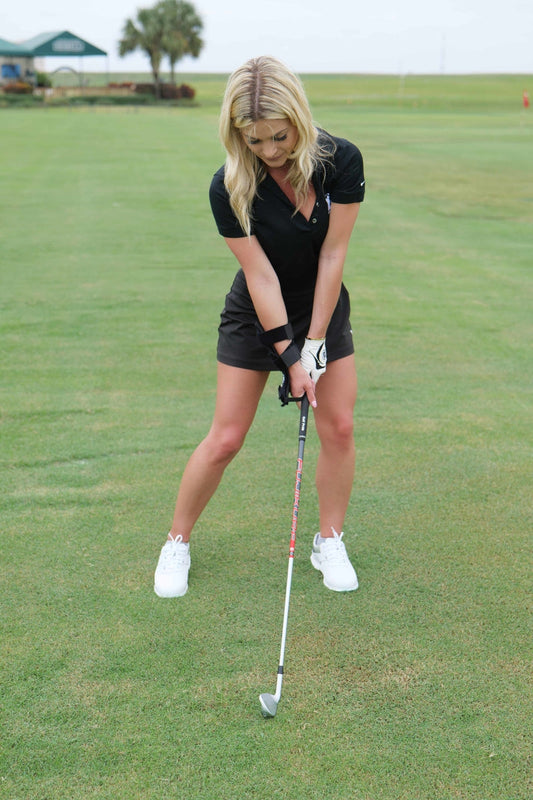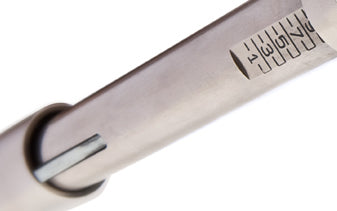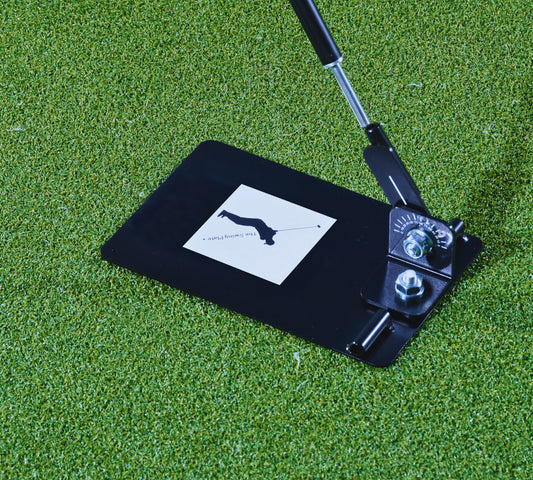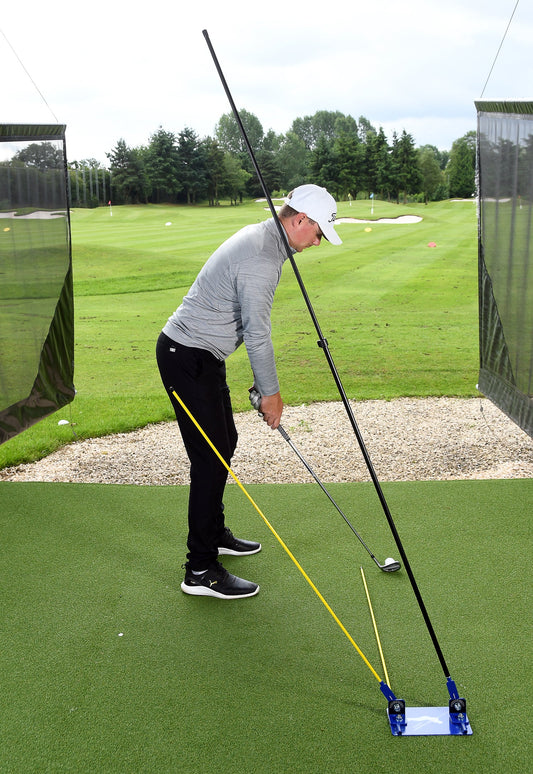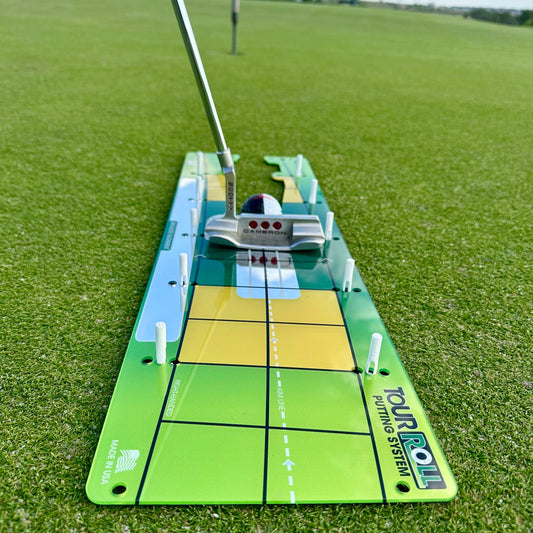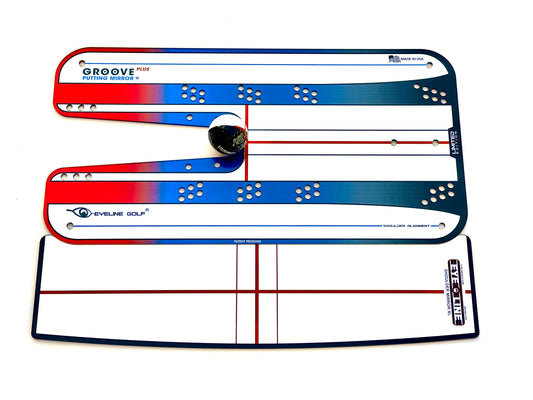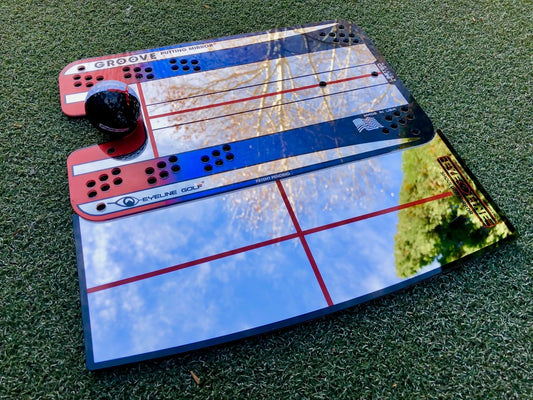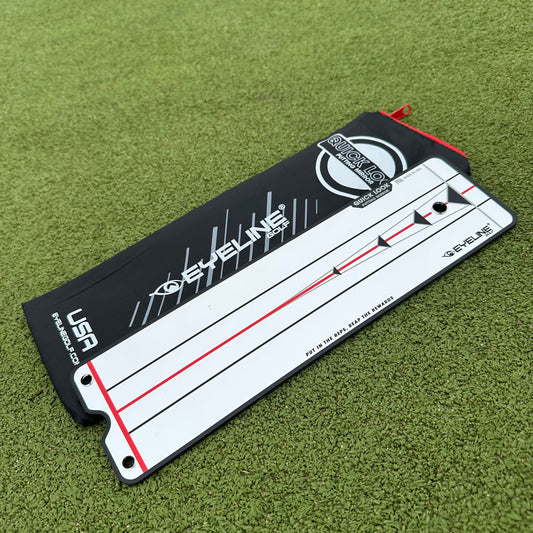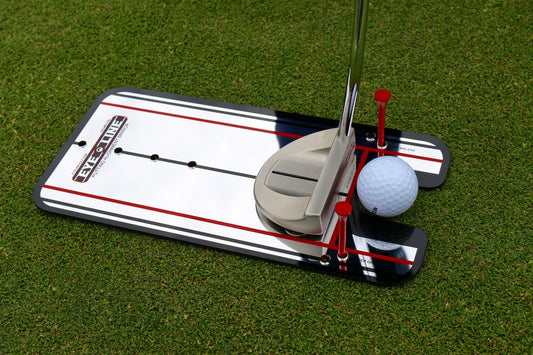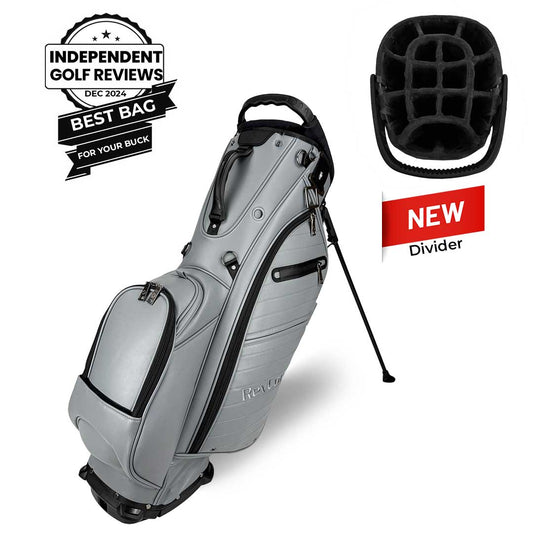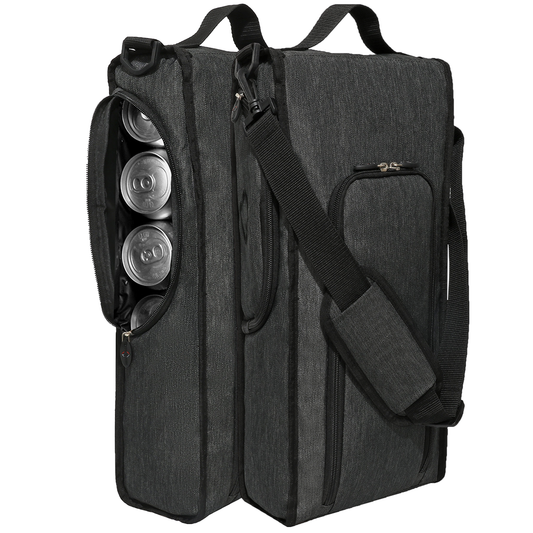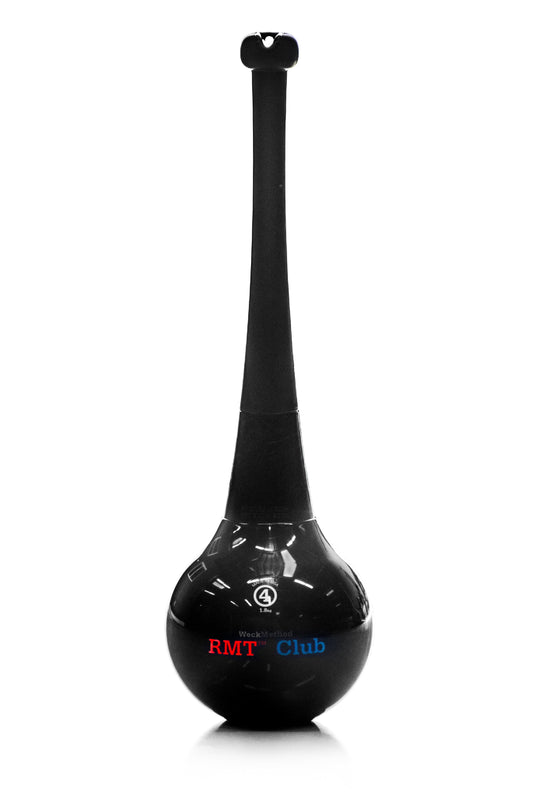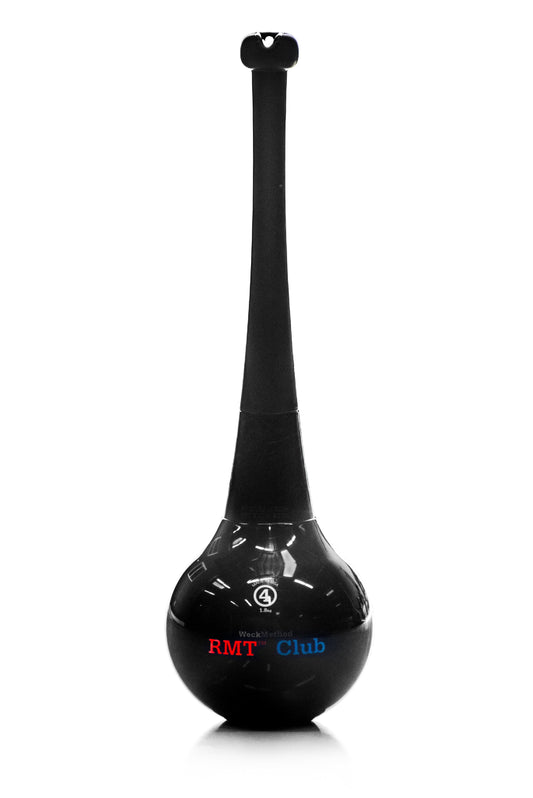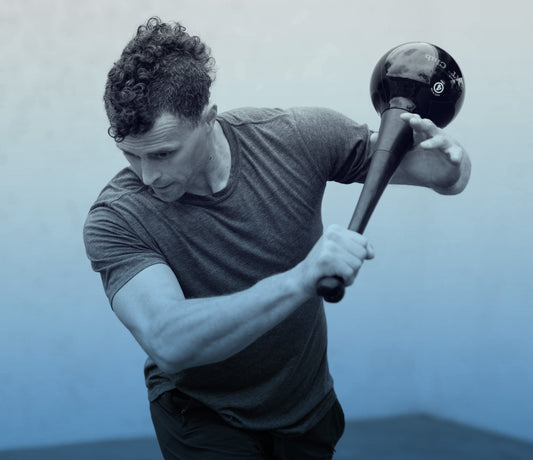
Blackout Training System
Feel for distance control isn’t just a nice-to-have skill — it’s the heartbeat of your wedge game. More importantly, it’s the gateway to playing golf with confidence, instinct, and freedom.

Tour Proven Putting Mirror's
Consistency is key to improving your putting, and the Putting Alignment Mirror's will help you lock in the perfect setup and alignment every time.

Measure & Improve Distance Control
Markings on the rail help check your stroke length, shaft rotation, and consistency. Finetune your putting for better distance control and confidence.

The Constrictor Golf Travel Bag
The Constrictor has been a top-selling golf travel bag for over 15 years. Customers love the durability and quality of the material used to protect their investment.

Practice T Alignment System
The mirror slides on the top rail and allows you to see if your shoulders are square and if your eyes, head and hips are properly positioned. Folds and fits in bag.
Blackout Putting Training Aids
Blackout golf will continue to introduce you to top-tier, impactful Putting Aids. We’re committed to bringing you the tools and knowledge to install Blackout Mode into your game, so you're not thinking about the process of doing it correctly on game day.
-
The Putting Arc | Square at Impact
Vendor:Golf Training AidsRegular price $29.99 USDRegular price$49.99 USDSale price $29.99 USDSale -
The Putting Arc | hit every putt square
Vendor:Golf Training AidsRegular price $74.99 USDRegular price$89.99 USDSale price $74.99 USDSale -
ROLL THE ROCK PUTTING MAT - 8 FOOTER
Vendor:EyeLine GolfRegular price $79.95 USDRegular price$89.95 USDSale price $79.95 USDSale -
Roll the Rock Putting Challenge Mat (10'x2')
Vendor:EyeLine GolfRegular price $199.95 USDRegular price$224.95 USDSale price $199.95 USDSale -
Putting Sword by Michael Breed - Standard Model
Vendor:EyeLine GolfRegular price $39.95 USDRegular price -
Putting Sword 2.0 by Michael Breed - Tour Model
Vendor:EyeLine GolfRegular price $39.95 USDRegular price$39.95 USDSale price $39.95 USD -
Putting Sword 2.0 by Michael Breed - Pair (Standard & Tour Model)
Vendor:EyeLine GolfRegular price $59.95 USDRegular price$79.90 USDSale price $59.95 USDSale -
PUTTING CIRCUIT TRAINER - YELLOW TRAINER
Vendor:EyeLine GolfRegular price $34.95 USDRegular price$34.95 USDSale price $34.95 USD -
PUTTING CIRCUIT TRAINER - MIRROR TRAINER
Vendor:EyeLine GolfRegular price $49.95 USDRegular price$49.95 USDSale price $49.95 USD -
PUTTING CIRCUIT TRAINER - BLUE TRAINER
Vendor:EyeLine GolfRegular price $34.95 USDRegular price$34.95 USDSale price $34.95 USD -
PUTTING CIRCUIT TRAINER - 3 PART SYSTEM (SAVE $40)
Vendor:EyeLine GolfRegular price $79.95 USDRegular price$119.95 USDSale price $79.95 USDSale -
Putting Arc | Keep Putter on Plane
Vendor:Golf Training AidsRegular price $59.99 USDRegular price$79.99 USDSale price $59.99 USDSale
Wedge & Full Swing Training Aids
Blackout golf will continue to introduce you to top-tier, impactful fairway wedge training aids. We’re committed to bringing you the tools and knowledge to install Blackout Mode into your game, so you're not thinking about the process of doing it correctly on game day.
-
Tour-Feel Swing Trainer
Vendor:Golf Training AidsRegular price $49.99 USDRegular price$99.99 USDSale price $49.99 USDSale -
The Wedge Distance Builder | Power Training
Vendor:Golf Training AidsRegular price $64.99 USDRegular price$119.99 USDSale price $64.99 USDSale -
The Swing Plate Trainer | Range Practice
Vendor:Golf Training AidsRegular price From $79.99 USDRegular price$99.99 USDSale price From $79.99 USDSale -
The Stance Towel - By Swing Plate
Vendor:Golf Training AidsRegular price $34.99 USDRegular price$39.99 USDSale price $34.99 USDSale -
The Key Golf Wrist Brace | Keeps Right Hand in Position
Vendor:Golf Training AidsRegular price $39.99 USDRegular price -
The Divot Board - Patented Swing Path Trainer
Vendor:Golf Training AidsRegular price $84.99 USDRegular price$129.99 USDSale price $84.99 USDSale -
The Distance Builder | Warm-Up Trainer
Vendor:Golf Training AidsRegular price $59.99 USDRegular price$109.99 USDSale price $59.99 USDSale -
The Connector drill for wedge distance control
Vendor:Golf Training AidsRegular price $99.99 USDRegular price$119.99 USDSale price $99.99 USDSold out -
The Compression Ball | Improve Ball Striking
Vendor:Golf Training AidsRegular price $49.99 USDRegular price$64.99 USDSale price $49.99 USDSale -
SwingRite TIMING trainer | build implicit memory
Vendor:Golf Training AidsRegular price $129.99 USDRegular price$159.99 USDSale price $129.99 USDSale -
Swing Plate Extension Pole
Vendor:Golf Training AidsRegular price $39.99 USDRegular price -
Swing Plate Dual Pro | Practice Range
Vendor:Golf Training AidsRegular price From $94.99 USDRegular price$114.99 USDSale price From $94.99 USDSale
Blackout Putting Mirrors
Blackout Putting Alignment Mirrors helps you position your eyes where you can see the line of the putt accurately, ensuring consistent setup every time you stand over the ball. Whether directly over the ball or just inside, the mirror enables you to find your ideal eye position for better putt accuracy.
-
Tour Roll Putting Mirror Trainer
Vendor:EyeLine GolfRegular price $79.95 USDRegular price$99.95 USDSale price $79.95 USDSale -
Shoulder Mirror for EyeLine Classic Putting Mirror & Groove PLUS Mirror (large)
Vendor:EyeLine GolfRegular price From $39.95 USDRegular price$39.95 USDSale price From $39.95 USD -
Shoulder Mirror - Groove and Putting Alignment Mirror (small)
Vendor:EyeLine GolfRegular price $29.95 USDRegular price$29.95 USDSale price $29.95 USD -
Quick Look Mirror
Vendor:EyeLine GolfRegular price $29.95 USDRegular price -
PUTTING CIRCUIT TRAINER - MIRROR TRAINER
Vendor:EyeLine GolfRegular price $49.95 USDRegular price$49.95 USDSale price $49.95 USD -
PUTTING CIRCUIT TRAINER - 3 PART SYSTEM (SAVE $40)
Vendor:EyeLine GolfRegular price $79.95 USDRegular price$119.95 USDSale price $79.95 USDSale -
Putting Alignment Mirror | Setup and Alignment
Vendor:EyeLine GolfRegular price From $39.95 USDRegular price -
New - Groove Plus Putting Mirror
Vendor:EyeLine GolfRegular price $79.95 USDRegular price -
Groove Putting Mirror + Putting Sword Pair
Vendor:EyeLine GolfRegular price $109.90 USDRegular price$139.90 USDSale price $109.90 USDSale -
Groove Plus Putting Mirror
Vendor:EyeLine GolfRegular price From $74.95 USDRegular price$89.95 USDSale price From $74.95 USDSale -
Edge Putting Rail | Quick Look Mirror Combo
Vendor:EyeLine GolfRegular price $79.95 USDRegular price$89.95 USDSale price $79.95 USDSale -
Classic EyeLine Putting Mirror (Large)
Vendor:EyeLine GolfRegular price From $59.95 USDRegular price$59.95 USDSale price From $59.95 USD
The CaddyDaddy Collection
For over 20 years CaddyDaddy has been designing and producing premium travel bags, golf gloves, golf bags and accessories. Using the finest materials and hardware available, and our warranties and customer service are unmatched.
-
RevCore LT Lightweight Golf Bag
Vendor:CaddyDaddyRegular price $219.00 USDRegular price$249.00 USDSale price $219.00 USDSale -
The Constrictor Golf Travel Bag | Superior Style
Vendor:CaddyDaddyRegular price From $119.95 USDRegular price -
RevCore Golf Cart Bag | 14 Way Divider
Vendor:CaddyDaddyRegular price $249.00 USDRegular price$299.00 USDSale price $249.00 USDSale -
First Class Golf Travel Bag | Ultimate Protection
Vendor:CaddyDaddyRegular price From $219.95 USDRegular price$247.94 USDSale price From $219.95 USDSale -
Enforcer Golf Travel Bag | Unrivaled Hard Top Durability
Vendor:CaddyDaddyRegular price From $179.95 USDRegular price$207.95 USDSale price From $179.95 USDSale -
RevCore Premium Hybrid Golf Bag
Vendor:CaddyDaddyRegular price From $249.00 USDRegular price$299.00 USDSale price From $249.00 USDSale -
Golf Bag Cooler | Designed for All Golf Bags
Vendor:CaddyDaddyRegular price From $21.99 USDRegular price$24.99 USDSale price From $21.99 USDSale
Blackout Golf Digital Training
-

Fairway Wedge System
Learn MoreYou’ve spent years chasing swing tips — but trust isn’t built through mechanics alone. The Fairway Wedge System flips the script by helping you train feel, not force. This is how distance control becomes instinctive, and how practice finally starts to pay off.
-

Blackout Putter System
Learn MoreThe Putter will make your confidence soar like no other club in the bag. The Putter is the last club you use on virtually every hole you play. It can make or break your attitude for the next hole. When you walk to the next hole feeling good about making Putts, your tee ball improves by default.
Learn the Mindset of Blackout Mode
-
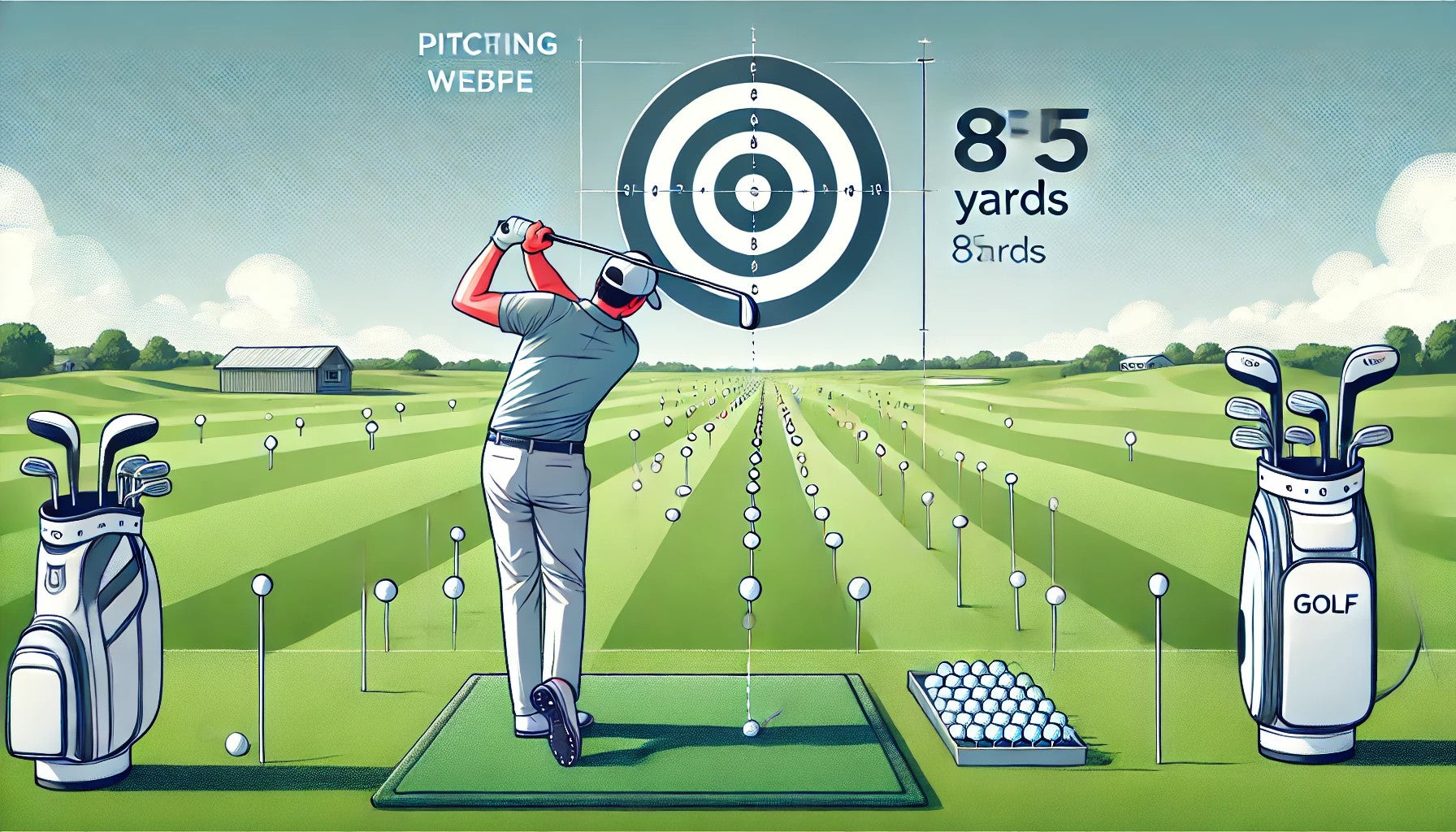
HOW TO DISCOVER YOUR FEEL FOR DISTANCE CONTROL
Read ArticleIf you’ve ever stood over a wedge shot, second-guessing your swing, grip, tempo—or worse, all three—you’re not alone. I used to grind through lessons, practice sessions, and Instagram tips, trying to unlock consistency.
-

HOW TO BUILD A PRE-SHOT ROUTINE THAT ELIMINATES OVERTHINKING
Read ArticleEvery golfer knows the feeling—you step up to the ball, overthinking your swing, unsure of your next move. But the best players don’t get caught up in mechanics.
-
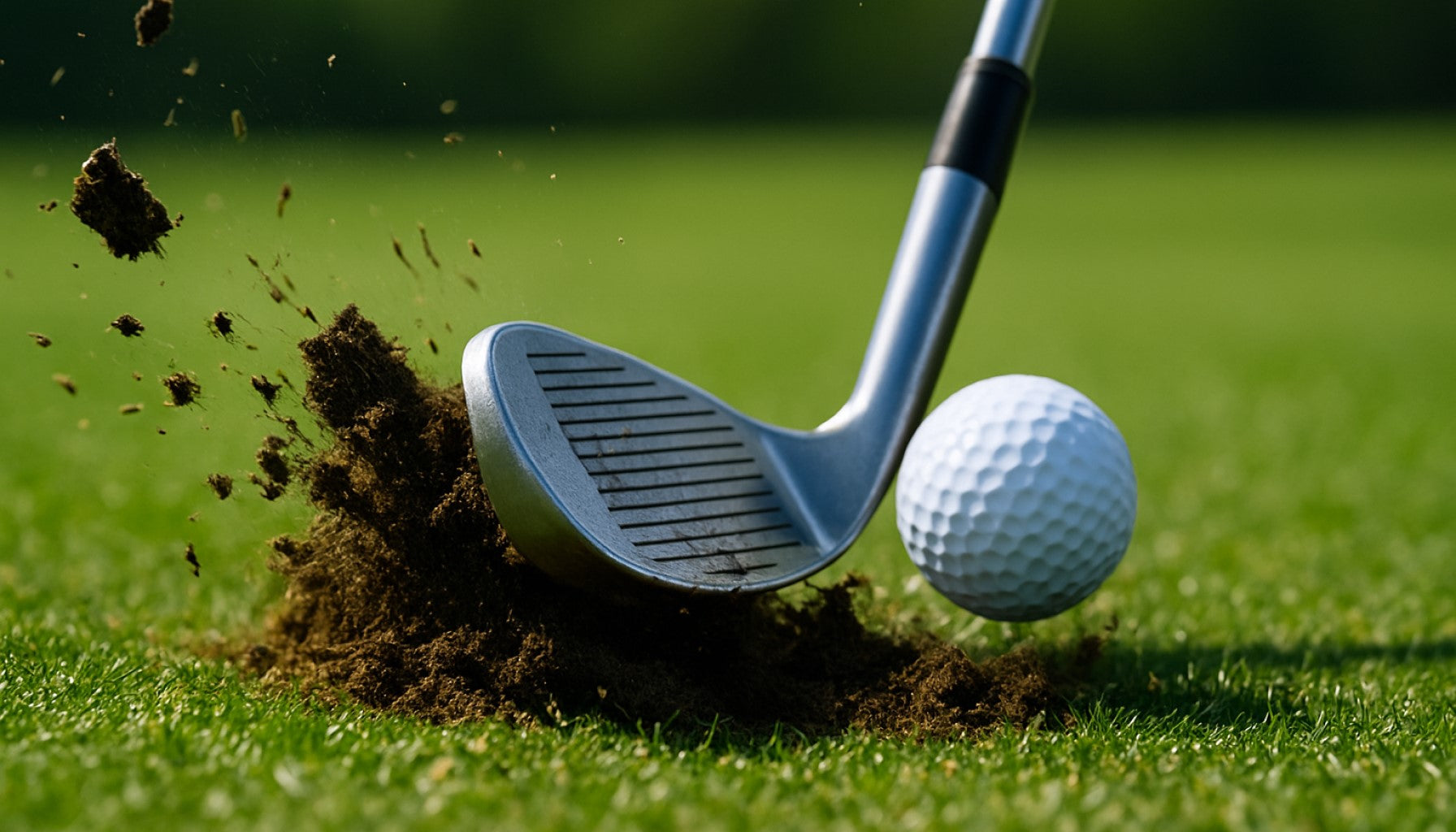
HOW LIE AND BOUNCE UNLOCK DISTANCE CONTROL
Read ArticleDistance control isn’t always just about “taking something off” your stock wedge swing. It’s about using the right wedge for the right lie, with the right bounce, to produce a predictable, repeatable shot.
The WeckMethod
The "WeckMethod" for golf involves training with the RMT (Rotational Movement Training) Club to improve functional strength, body mechanics, and balance, which ultimately enhances the golf swing. Exercises focus on developing the strength and mobility of the core, shoulders, and hips through rotational movements. The RMT Club's unique shifting weight provides tactile and audible feedback, helping golfers improve their rotational range of motion and power for a more efficient swing.
-
RMT® Club 2lb | Rotational Power
Vendor:WeckMethodRegular price $104.95 USDRegular price$104.95 USDSale price $104.95 USD -
RMT® Club 6lb | Rotational Power
Vendor:WeckMethodRegular price $114.95 USDRegular price$104.95 USDSale price $114.95 USD -
RMT® Club 8lb | Improves Rotational Power
Vendor:WeckMethodRegular price $119.95 USDRegular price$119.95 USDSale price $119.95 USD -
RMT® Club (2 lb. - 8 lb.) | Improves Rotational Power
Vendor:WeckMethodRegular price From $104.95 USDRegular price$104.95 USDSale price From $104.95 USD -
RMT® Club 4lb | Rotational Power
Vendor:WeckMethodRegular price $109.95 USDRegular price$109.95 USDSale price $109.95 USD -
BOSU® Elite Dome | Strength Training At Home
Vendor:WeckMethodRegular price $199.95 USDRegular price$199.95 USDSale price $199.95 USD
Your Game Starts Here
Blackout Golf exists to help players unlock their true potential through training that sticks — and confidence that carries over. Ready to trust your game? Start training today.






